Menu
Math Lesson 14.2.2 - What does the Sign of the Gradient Indicate?
Please provide a rating, it takes seconds and helps us to keep this resource free for all to use
Welcome to our Math lesson on What does the Sign of the Gradient Indicate? , this is the second lesson of our suite of math lessons covering the topic of Slopes and Gradients, you can find links to the other lessons within this tutorial and access additional Math learning resources below this lesson.
What does the Sign of the Gradient Indicate?
The sign of the gradient tells us very important information about the slope. We have the following cases when dealing with gradients:
- If the gradient is a positive finite number, the line increases in the quote (the line is increasing) when shifting from left to right. When dealing with linear graphs it is always possible to identify two distinct points with different coordinates, as we did in the first line of the above example. As always, we take the leftmost point as the first point to use in the gradient formula. We use the uppercase letters of the alphabet to express any points, so if for example, a certain line contains two points B and B, then point A is the leftmost one.
As stated earlier, the gradient's value tells us how much faster (or slower) the y-coordinate increases with respect to the x-coordinate when shifting from left to right on a line. Thus, if the gradient is greater than 1, the y-coordinates increase faster than the corresponding x-coordinates; if the gradient is equal to 1, the y-coordinates increase at the same rate as the corresponding x-coordinates; and if the gradient is smaller than 1, the y-coordinates increase slower than the corresponding x-coordinates.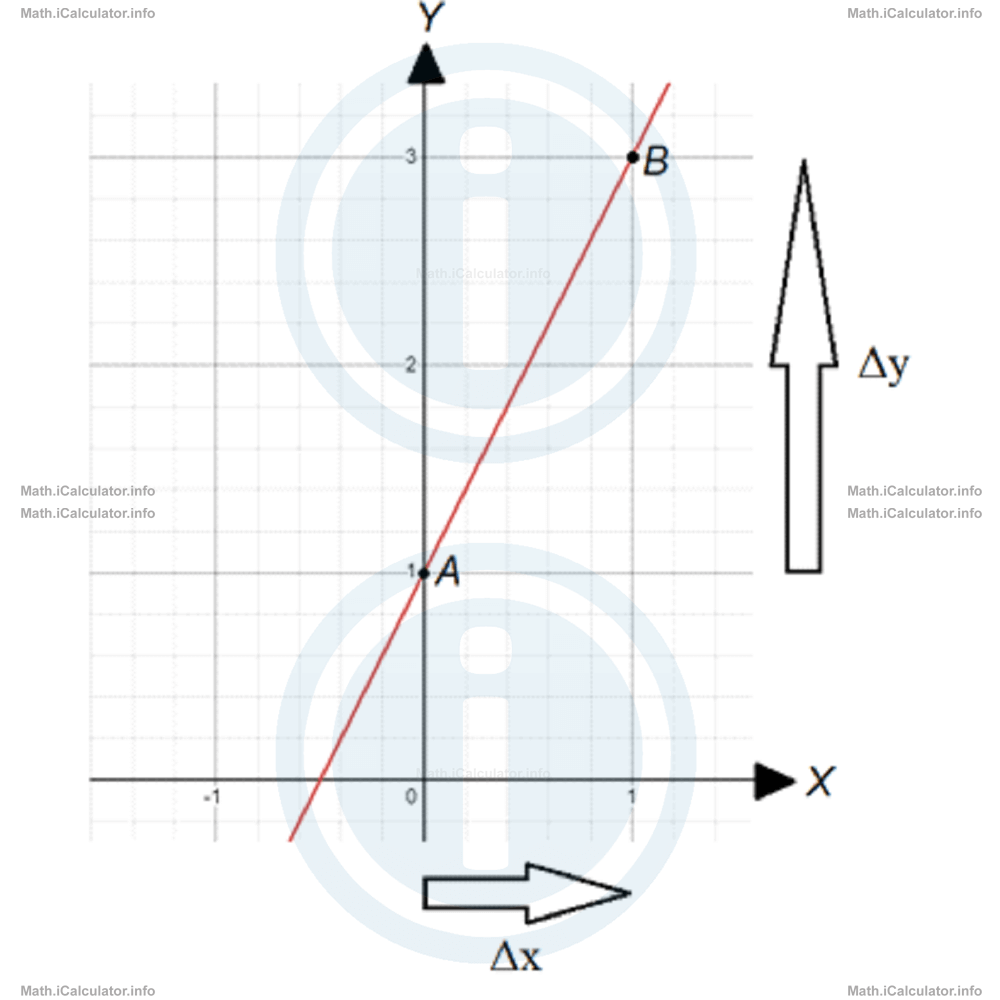 The gradient of the line shown in the above graph is 2, because it is evident that the y-coordinate increases twice as faster than the corresponding x-coordinate. Thus, the y-coordinate from 1 becomes 3 when shifting from A to B, while the x-coordinate from 0 becomes 1 during the same process.
The gradient of the line shown in the above graph is 2, because it is evident that the y-coordinate increases twice as faster than the corresponding x-coordinate. Thus, the y-coordinate from 1 becomes 3 when shifting from A to B, while the x-coordinate from 0 becomes 1 during the same process.
On the other hand, the gradient of the other line shown in the figure below is 1/2 (or 0.5), as the y-coordinate increases twice as slow as the corresponding x-coordinate.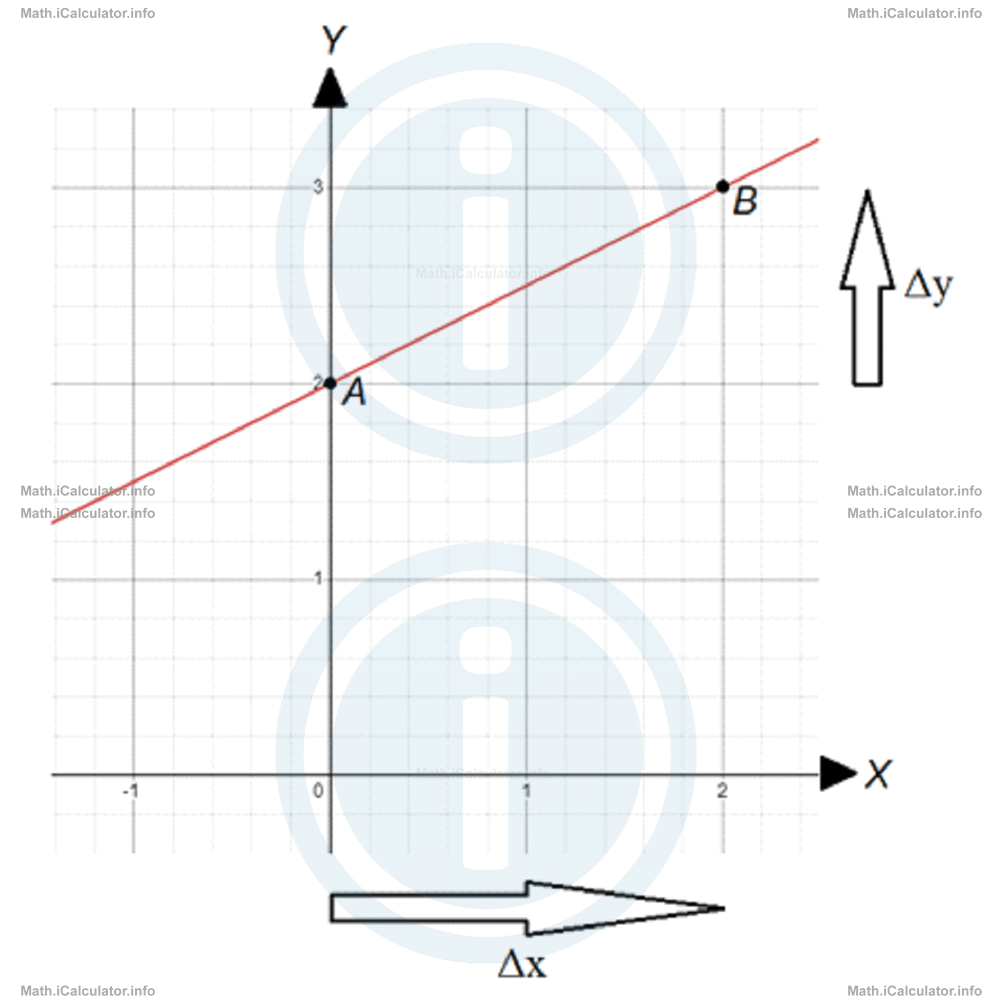 Thus, the y-coordinate from 2 becomes 3 (increases by 1) while the corresponding x-coordinate increases from 0 to 2 (increases by two) when moving from A to B.
Thus, the y-coordinate from 2 becomes 3 (increases by 1) while the corresponding x-coordinate increases from 0 to 2 (increases by two) when moving from A to B. - If the gradient is negative, the line decreases in the quote (is decreasing) when shifting from left to right. If the gradient is smaller than -1, then the y-coordinate decreases at a higher rate than the increase in the corresponding x-coordinate, as shown in the figure below.
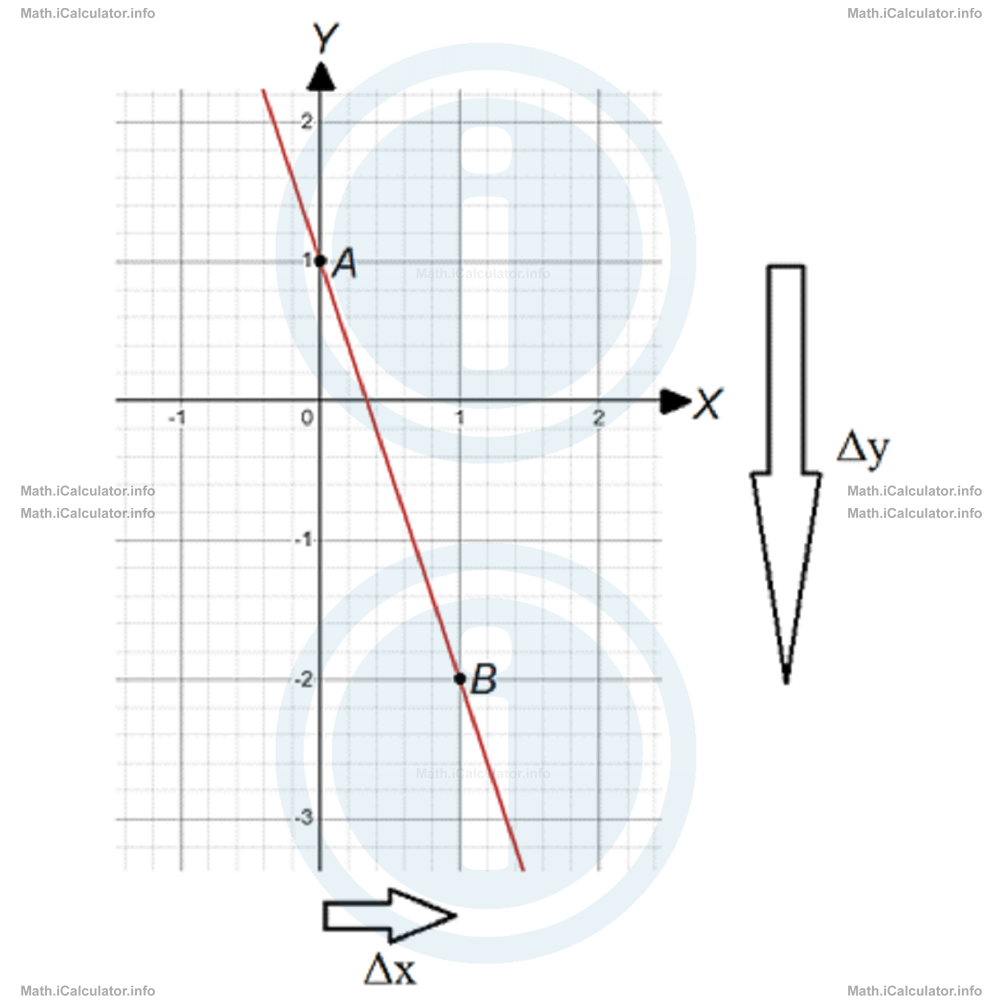 You can see that for every one unit of increase in the x-coordinate of the line there is a decrease by three units in the corresponding y-coordinate. Therefore, we say the gradient is -3, as the y-coordinate decreases three times faster than the increase of the x-coordinate.
You can see that for every one unit of increase in the x-coordinate of the line there is a decrease by three units in the corresponding y-coordinate. Therefore, we say the gradient is -3, as the y-coordinate decreases three times faster than the increase of the x-coordinate.
Indeed, using the gradient formula for points A and B of the above line yieldsk = ∆y/∆x = yB - yA/xB - xAOn the other hand, when the y-coordinate of a line decreases at a slower rate than the increase in the corresponding x-coordinate, we have a negative gradient greater than -1. The following figure represents such an example.
= -2 - 1/1 - 0
= -3/1
= -3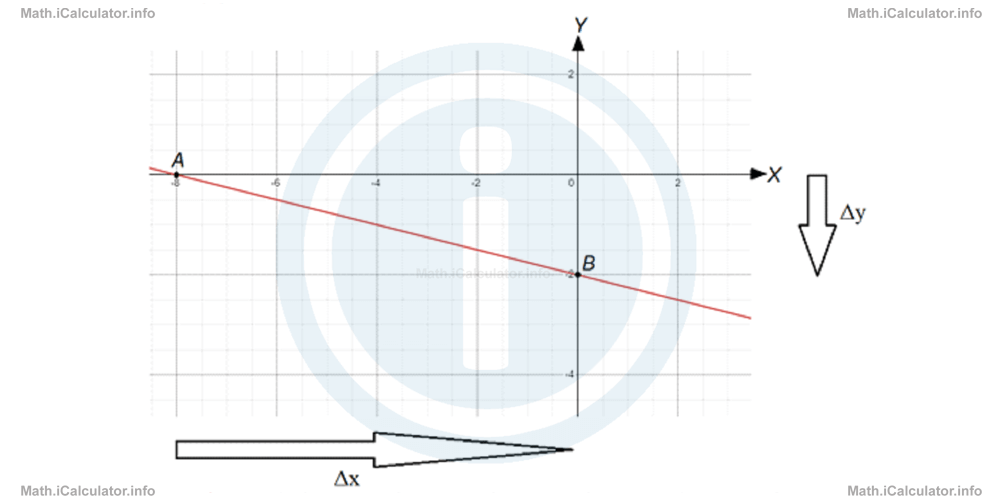 From this graph, it is obvious that for every eight units of increase in the x-coordinate there are two units of decrease in the corresponding y-coordinate. Therefore, the gradient of this line is -2/8 (or -1/4 or -0.25). Indeed, using the gradient formula for points A and B of the above line yields k = ∆y/∆x = yB - yA/xB - xA
From this graph, it is obvious that for every eight units of increase in the x-coordinate there are two units of decrease in the corresponding y-coordinate. Therefore, the gradient of this line is -2/8 (or -1/4 or -0.25). Indeed, using the gradient formula for points A and B of the above line yields k = ∆y/∆x = yB - yA/xB - xA
= -2 - 0/0 - (-8)
= -2/8
= -1/4
Remark! The change in the x-coordinate is always taken as positive as we always consider movements from left to right. The sign of the gradient is therefore determined by the changes in the y-coordinate (moving up = positive, moving down = negative).
What if the gradient is equal to -1? Well, in this case, any increase in the x-coordinate brings a decrease in the same rate of the corresponding y-coordinate. Look at the figure below.
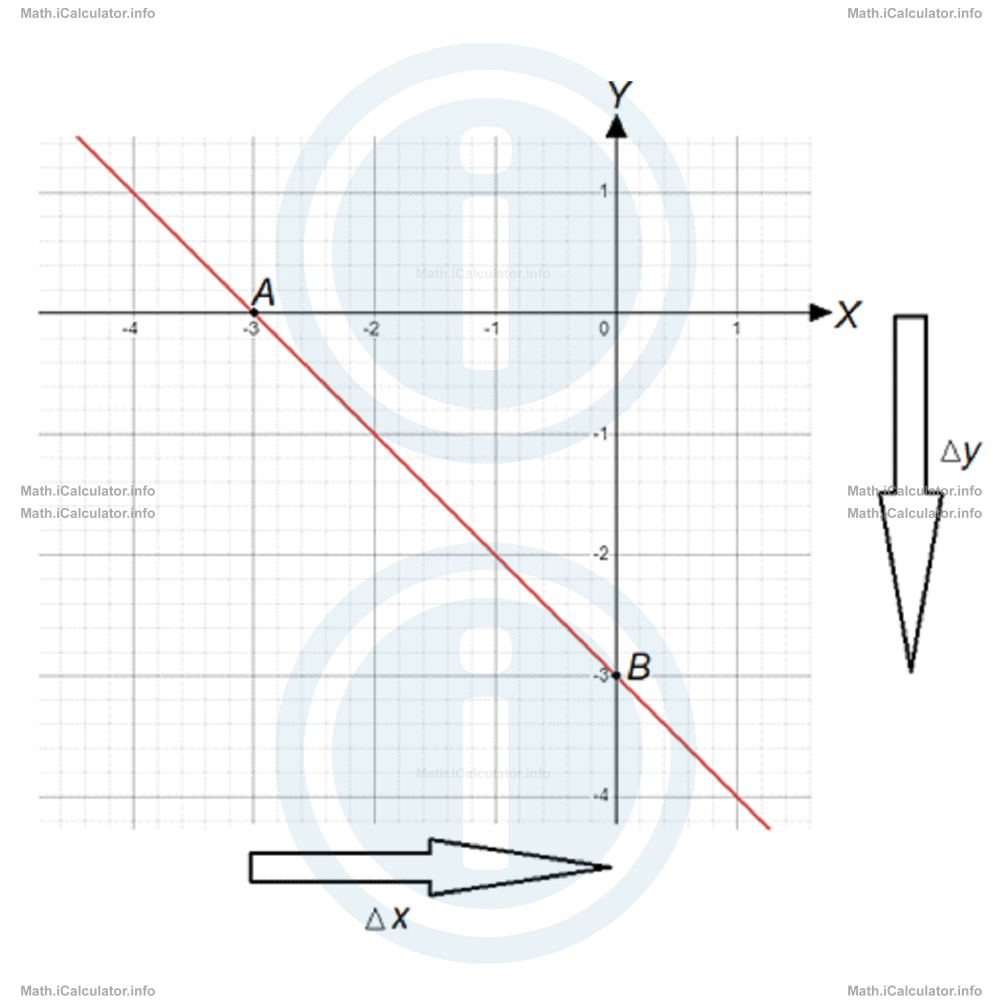
Indeed, using the gradient formula for points A and B of the above line yields
= -3 - 0/0 - (-3)
= -3/3
= -1
Example 2
Find the gradients of the following lines shown in the figure below.
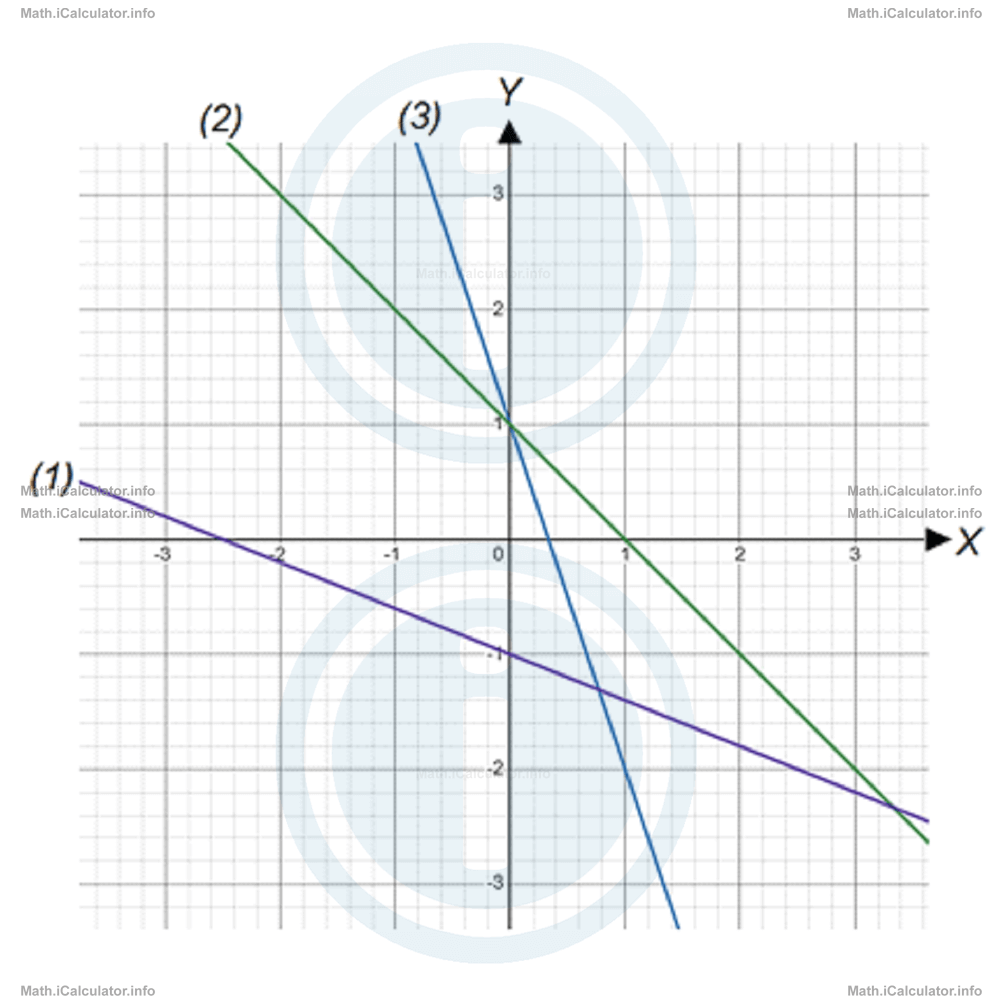
Solution 2
The procedure for calculating the gradient of the above lines requires identifying two distinct points for each line. In this way, we obtain the following figure:
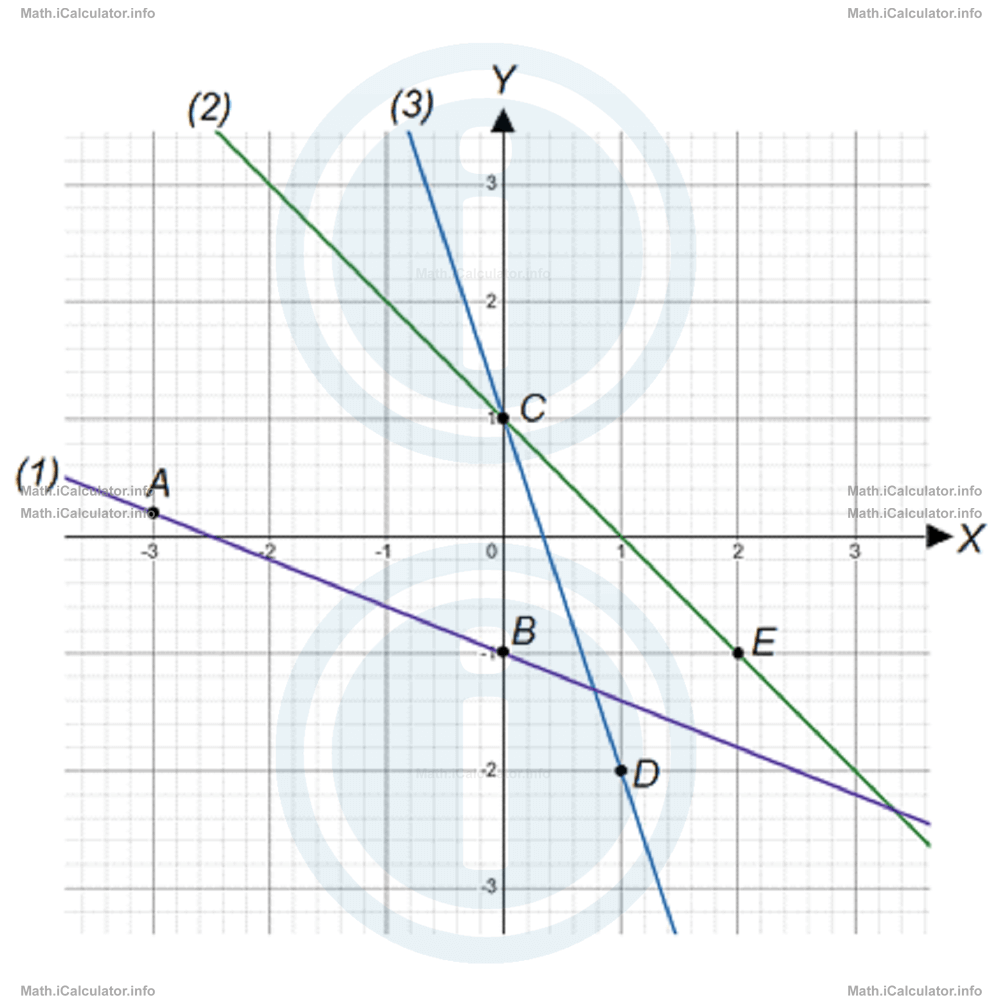
- For the line (1) we have to consider the points A(-3, 1/5) and B(0, -1) to calculate the gradient k1. Thus, using the gradient's formula yields k1 = ∆y1/∆x1 = yB - yA/xB - xA
= -1 - 1/5/0 - (-3)
= -5/5-1/5/0 + 3
= -6/5/3
= -6/5/3/1
= -6/5 ∙ 1/3
= -6/15
= -2/5
= -0.4 - For the line (2) we have to consider the points C(0, 1) and E(2, -1) to calculate the gradient k2. Thus, using the gradient's formula yields k2 = ∆y2/∆x2 = yE - yC/xE - xC
= (-1 - 1/2 - 0
= -2/2
= -1 - For the line (3) we have to consider the points C(0, 1) and D(1, -2) to calculate the gradient k3. Thus, using the gradient's formula yields k3 = ∆y3/∆x3 = yD - yC/xD - xC
= (-2 - 1/1 - 0
= -3/2
= -3
As you see, all the above gradients are negative (as expected) because all the three lines are decreasing when moving from left to right.
More Slopes and Gradients Lessons and Learning Resources
Whats next?
Enjoy the "What does the Sign of the Gradient Indicate? " math lesson? People who liked the "Slopes and Gradients lesson found the following resources useful:
- Sign Feedback. Helps other - Leave a rating for this sign (see below)
- Linear Graphs Math tutorial: Slopes and Gradients. Read the Slopes and Gradients math tutorial and build your math knowledge of Linear Graphs
- Linear Graphs Revision Notes: Slopes and Gradients. Print the notes so you can revise the key points covered in the math tutorial for Slopes and Gradients
- Linear Graphs Practice Questions: Slopes and Gradients. Test and improve your knowledge of Slopes and Gradients with example questins and answers
- Check your calculations for Linear Graphs questions with our excellent Linear Graphs calculators which contain full equations and calculations clearly displayed line by line. See the Linear Graphs Calculators by iCalculator™ below.
- Continuing learning linear graphs - read our next math tutorial: Equation of Linear Graphs
Help others Learning Math just like you
Please provide a rating, it takes seconds and helps us to keep this resource free for all to use
We hope you found this Math tutorial "Slopes and Gradients" useful. If you did it would be great if you could spare the time to rate this math tutorial (simply click on the number of stars that match your assessment of this math learning aide) and/or share on social media, this helps us identify popular tutorials and calculators and expand our free learning resources to support our users around the world have free access to expand their knowledge of math and other disciplines.